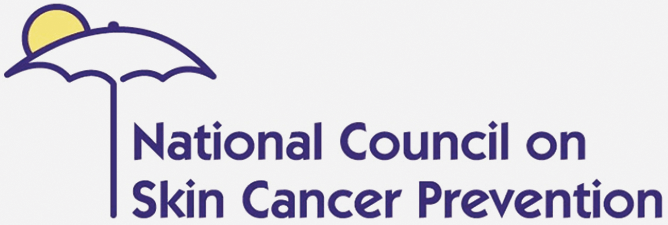About Indoor Tan-Free Skin Smart Campus
Despite the known risks, indoor tanning is common among adolescents and young adults with 37% of white adolescent females and 11% of adolescent white males having used indoor tanning facilities at least once in their lifetime.1 Additionally, early research suggests that indoor tanning has addictive properties and that the risk of addiction is higher for individuals who begin tanning at an earlier age.2,3
The Indoor Tan-Free Skin Smart Campus Initiative is sponsored by the National Council on Skin Cancer Prevention in response to the 2014 U.S. The Surgeon General’s Call to Action to Prevent Skin Cancer. The Indoor Tan-Free Skin Smart Campus Initiative encourages U.S. universities and colleges to promote skin cancer prevention policies and education on campus. A college may self-nominate for the Indoor Tan-Free Skin Smart Campus Award recognition or be nominated by a member of the Indoor Tan-Free Skin Smart Campus working group. The universities recognized by this award will have demonstrated a commitment to skin cancer prevention and the ongoing health of their students.
Colleges and universities may apply to achieve one of the three levels (Silver, Gold, or Platinum) of the Skin Smart Campus Award.
To achieve any level of the award, schools must prohibit indoor tanning devices in all university-owned and controlled housing for faculty, staff, or students, and in all campus buildings, including those with tenants.
In addition, campus leadership must indicate their support of the initiative by signing a Memo of Understanding (MOU) agreement with the National Council.
Other criteria include:
The college or university…
- does NOT permit any business that provides indoor tanning to be included as a university-affiliated debit card merchant.
- will create an educational web page on the college/university website, focusing on the risks of UV exposure and promoting skin cancer prevention practices, available to students, faculty, and staff at all times.
The Platinum Level is achieved by fulfilling ALL criteria. If one of the two “other criteria” are met, Gold Level is achieved. Schools may achieve Silver Level while working on the “other criteria.” Schools should strive to move up to the next level within a year.
Sponsors
Would you or your organization like to support the initiative?
References:
- Demko CA, Borawski EA, Debanne SM, Cooper KD, Stange KC. Use of indoor tanning facilities by white adolescents in the United States. Arch Pediatr Adolesc Med. Sep 2003;157(9):854-860.
- Zeller S, Lazovich D, Forster J, Widome R. Do adolescent indoor tanners exhibit dependency? J Am Acad Dermatol. Apr 2006;54(4):589-596.
- Feldman SR, Liguori A, Kucenic M, et al. Ultraviolet exposure is a reinforcing stimulus in frequent indoor tanners. J Am Acad Dermatol. Jul 2004;51(1):45-51.


